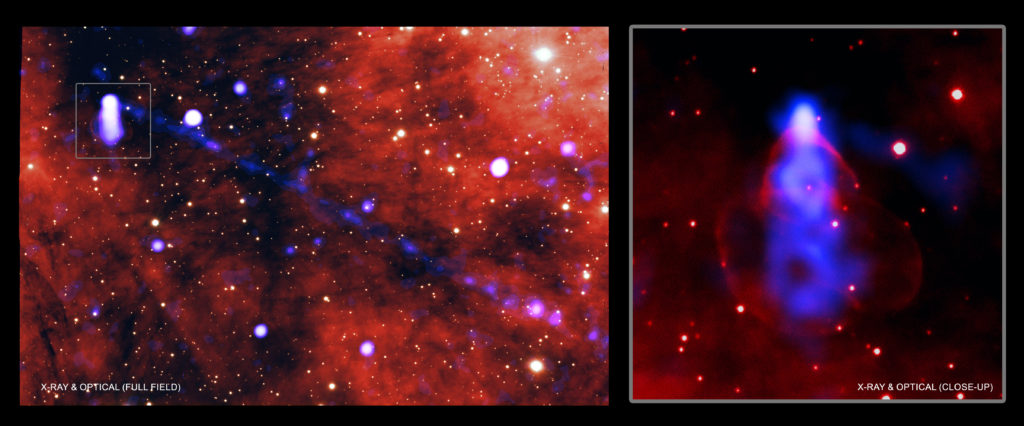
The record-breaking beam is powered by a pulsar, a rapidly rotating collapsed star with a strong magnetic field.
With its tremendous scale, this beam may help explain the surprisingly large numbers of positrons, the antimatter counterparts to electrons, throughout the Milky Way galaxy.
Astronomers first discovered the beam, or filament, in 2020, but they did not know its full length because it extended beyond the edge of the Chandra detector. New Chandra observations by the same pair of researchers taken in February and November 2021 show the filament is about three times as long as originally seen. The filament spans about half the diameter of the full Moon on the sky, making it the longest one from a pulsar as seen from Earth.
“It’s amazing that a pulsar that’s only 10 mile...
Read More






Recent Comments